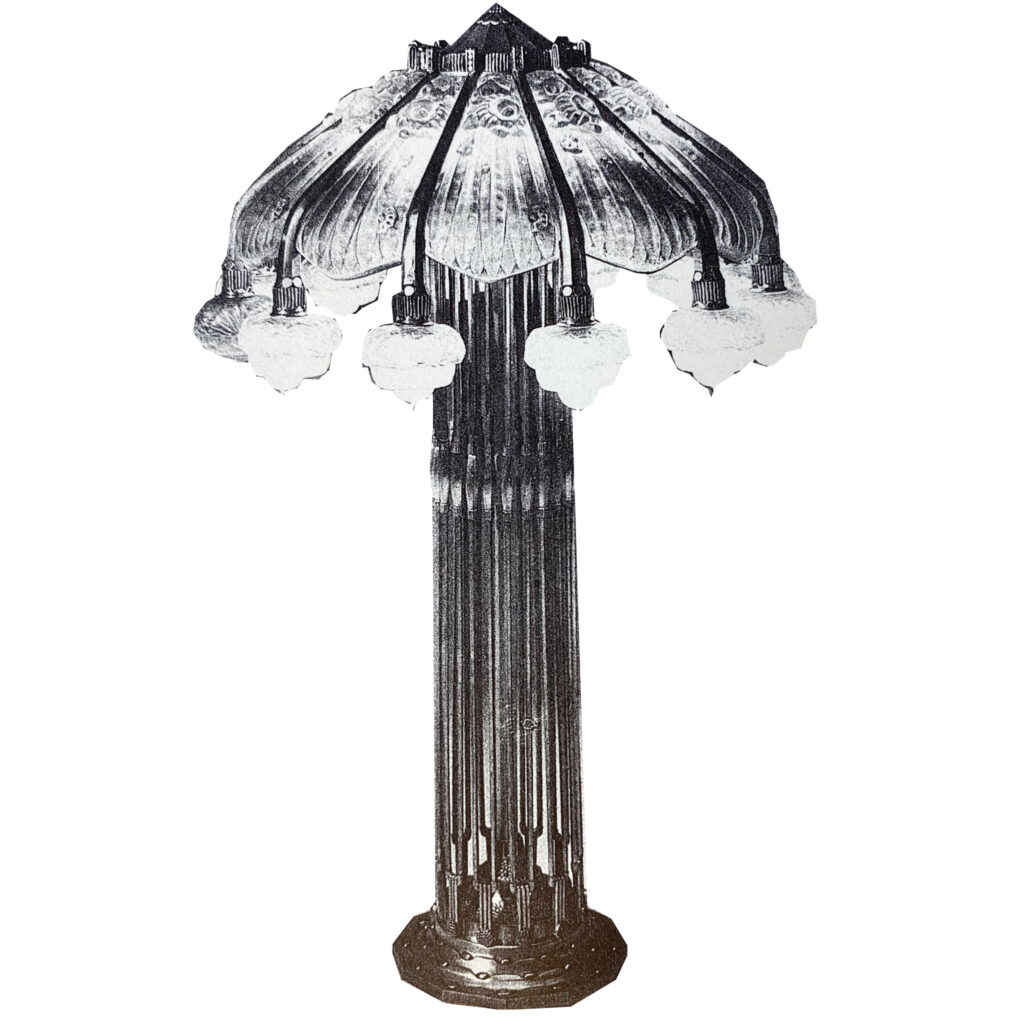Genet & Michon

(Philippe Genet born 1882 Lucien Michon (1887-1963))
Genet and Michon called themselves decorators and manufacturers, but they specialized almost exclusively in lighting. As graduates of the Ecole Boulle, they concentrated mainly on pressed glass since 1922.
They mastered this technology most perfectly.
This was not a coincidence, but the result of intensive material analysis. They discovered that thick glass multiplies the reflection, thereby intensifying the light. The pressed glass offered ideal conditions for using different glass thicknesses in one shade.
To produce pressed glass, the raw materials soda, silicate and chalk were heated to 1300 degrees. The resulting glass mass was poured into a steel mold. The other additives to this glass mass were kept strictly secret.
They achieved such an excellent result that Genet & Michon made no changes to the mixture until 1930. It was absolutely ‘achromatic’; any pigment would have affected the brilliance and warmth of the light. Only subsequent etching was permitted. This was applied to achieve a ‘halation effect’ or if matt surfaces were to be placed against polished crystal glass.
The company was less successful with its lamps with glass beads and glass rods. The design was based too much on the 19th century. Metal frames of these lamps, made of chased and patinated bronze, chrome or wrought iron, were always as reserved and thin as possible.
Genet & Michon are credited with two inventions: G. Janneau, in his treatise on lamps at the 1925 exhibition, sees them as the inventors of the light borders made of glass. These were installed in a room as an illuminated frieze all around. Gaston Varenne, a critic at >Art et Décoration<, counts her alongside Lalique and Perzel in 1926 as one of the inventors of the glowing spheres made of pressed glass.
During the 1920s
Genet & Michon explored every conceivable form of lighting. In addition to lamps, chandeliers, appliques and illuminated tables, they also built light friezes, light blocks, door lintels, light columns, pilasters, cornices and light vases. They exhibited these not only through the Société des
Artistes Décorateurs (1922-1938) and in the Autumn Salon (1922-1924). They appeared on numerous other occasions: in 1924 at a major lighting competition, then at an exhibition in Monza, in 1925 in Paris at the large arts and crafts exhibition. Again in Paris in 1937 in the Pavilion of Light, they showcased their work. They also equipped the ocean liner Normandy.
Their first motifs of overloaded flower arrangements and bunches of grapes disappeared in the early 1930s. With them went the rough surface that the pressed glass initially had.
Source: Alastair Duncan, Lampen Lüster Leuchter, Jugendstil Art Déco, Prestel-Verlag, München 1979, p. 170-171.

RSA Antiquitäten Wiesbaden is your antiques dealer in the Rhine-Main area. A large selection of original Art Deco, Biedermeier and Baroque furniture: high quality and exclusive. At RSA Antiquitäten Wiesbaden you can expect a large selection of expertly restored antiques. Exhibits from the Louis Seize, Biedermeier, and Art Deco periods are available.
The following artist glossary: Georges Dunaime

-
RSA Antiquitäten Wiesbaden
-
Taunusstraße 34
65183 Wiesbaden -
+49 611 5 29 05 70
-
+49 170 7 83 01 13
-
info@antiquitaeten-wiesbaden.de
-
Mondayclosed
-
Tuesday - Friday12 a.m. - 6 p.m.
-
Saturday10 a.m. - 4 p.m.